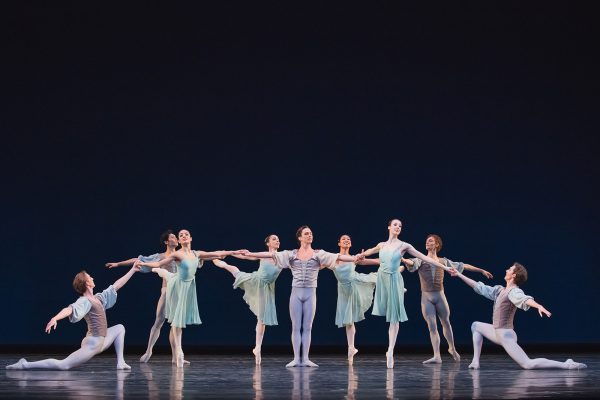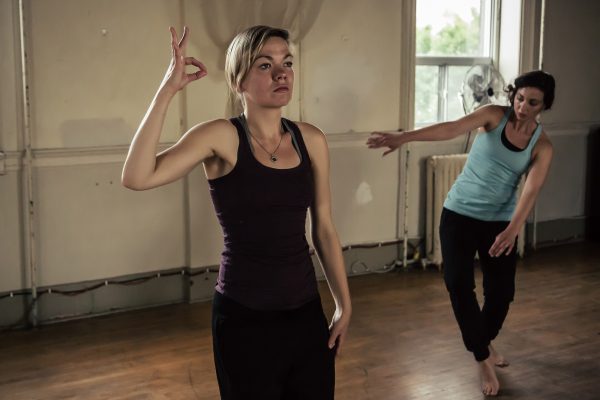In Korea, wearing a yellow armband (wan-jang in Korean) signifies leadership in a man, as elected by elders in the community. When Hanna Kiel was young, in her hometown of Seoul, South Korea, she saw a man wearing a yellow armband, and the memory has stayed with her until she found “the perfect moment to share it,” as explained in the program note of Armband.
Armband featured seven dancers — Andrea Gregorio, Kate Holden, Ryan Lee, Daniel McArthur, Sahara Morimoto, Erin Poole and Anisa Tejpar — as part of Kiel’s Human Body Expression, a company she founded in 2013. The work is an exploration into some of the push-and-pull of relationships that govern us every day, including power, community and individuality. The image of the armband representing leadership and status takes on a more abstract and expansive meaning in this production.
Armband was comprised of six scenes, which meant that one of the seven dancers was left out being a leader. Kiel used each scene to demonstrate how the balance of power can shift from one person to another, and even within the same person. The result is an ambitious work with strong cinematic elements, such as dramatic lighting. Kiel, along with dramaturge Bonnie Kim, composer John Gzowski, lighting designer Simon Rossiter and costume and set designer Julia Lee, paid careful attention to details big and small. Armband was accompanied by powerful, abstract music while the choreography worked on a more micro level. Each of the seven dancers was focused on the smallest of details, like perfectly crooked fingers or smooth lines. Together, this made for an hour-long work that was as captivating as it was thought-provoking.
Armband begins with five dancers standing motionless in blue suits in a sparse, living room–like setting, clustered around a white armchair. A spotlight illuminates the chair, which is positioned on a white rug in front of a white curtain at the back of the stage, as five dancers, their faces painted white, took turns tumbling into and around the chair. Gzowski’s piano composition alternates between thundering intensity and quiet melancholy. It is a powerful start to a program that swooped and soared through variations on Kiel’s theme of social environment.
Poole stood out in the group of dancers for both her intensity and technical ability. This was especially visible in the third scene when she sustains a laser-like focus on a point at the back of the theatre while Kate Holden skulks in the background, barely visible in the shadows. It was a striking and haunting combination, and Poole maintained this level of emotional intensity throughout the rest of the work.
Though most of the dancers, like Poole, have worked with Kiel before, they didn’t show the same level of skill and intensity as Poole did. McArthur, in particular, stood out as a weak link. He has a large frame and wingspan, and when both were exploited, the effect was powerful. But Kiel, for reasons only known to her, used his size sparingly, preferring to keep him synchronized to the other dancers’ movements too often.
Kiel uses six separate scenes in Armband but threads certain motifs that link the dance from start to finish. In the first scene, the face-painted dancers hold up their hands to the sides of their faces like devil horns. Poole repeats this gesture in the fourth scene, but this time while leaning back into Holden so instead we see Poole’s hands on top of Holden’s head.
At the age of forty-one, Kiel has had the luxury of a career that has spanned almost two decades, affording her opportunities to stretch herself creatively by exploring new forms of concepts, movement and choreography. If Armband is any indication, we can expect Kiel to keep challenging herself as much as us with her work.
Tagged: Choreography, Contemporary, Kate Holden, Performance, Sahara Morimoto, ON , Toronto





